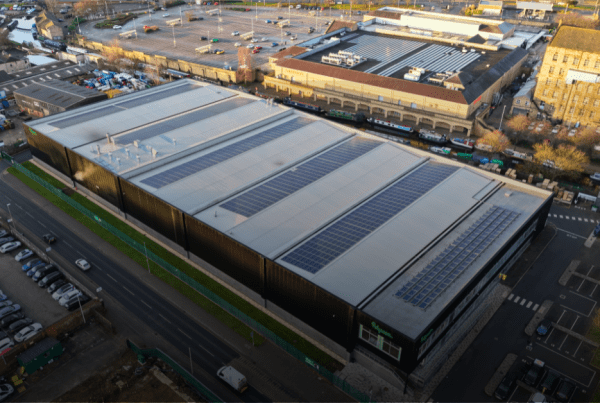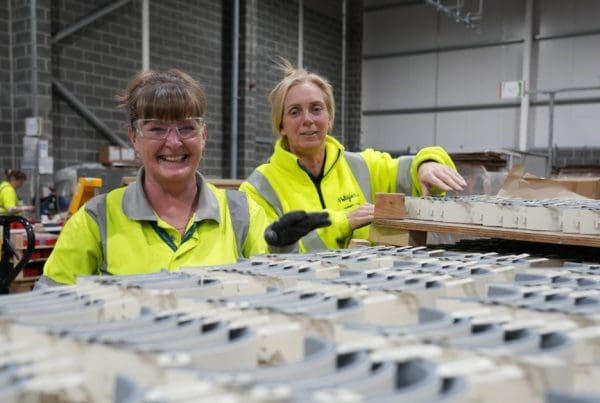Last Updated on 14/10/2025 by owen_2023
Passive Fire Protection Trends in 2025: What’s Shaping the Industry in the UK and Europe
At Polyseam, passive fire protection has been at the heart of our business since 1993. As a leading manufacturer with deep expertise in R&D, compliance, and sustainable manufacturing, we’re committed to keeping people safe by engineering solutions that meet today’s standards—and tomorrow’s challenges.
The world of PFP is evolving quickly, with 2025 marking a significant shift in how products are designed, certified, and integrated into modern buildings. Here’s a closer look at the key trends shaping passive fire protection across the UK and Europe this year.
- Regulatory Reform and Standard Harmonisation
One of the biggest drivers of change in 2025 is the tightening of fire safety regulations across Europe. Following a series of high-profile fire incidents, there is now a stronger push toward harmonised standards, such as EN 13501, and greater enforcement of third-party certification and traceability.
In the UK, Regulation 38 and updated Building Regulations are reinforcing the need for clear documentation of where PFP systems are installed, how they perform, and how they are maintained over time.
For manufacturers and contractors, this means:
- Higher scrutiny on compliance and documentation
- Increased demand for test evidence and certification
- Pressure to align with EU standards, even post-Brexit
- Sustainability in Focus: Low-Emission, High-Performance Materials
Sustainability is no longer a side conversation—it’s a central design requirement.
Specifiers and developers are demanding PFP systems that support green building goals. Products with low VOC emissions, recyclable content, and lower embodied carbon are gaining traction, especially in projects targeting BREEAM, LEED, or WELL certifications.
At Polyseam, our commitment to sustainability includes:
- In-house formulation of low-VOC intumescent coatings
- Efficient, energy-conscious manufacturing powered by 100% renewable electricity
- Continued investment in R&D for greener raw materials
- Digitalisation: From Installation to Lifecycle Compliance
2025 is seeing rapid digital adoption across the built environment, and passive fire protection is no exception.
Key developments include:
- BIM integration of PFP products for early-stage design planning
- Digital twins for lifecycle asset tracking
- Geo-tagged, photographic records of installations
- Cloud-based compliance reporting tools
These technologies not only support regulatory requirements but also offer building owners and facilities managers better visibility and long-term control of fire safety assets.
- Retrofitting and Heritage Protection
Europe’s architectural heritage presents a unique challenge: how to upgrade fire safety without compromising the character of older buildings.
The latest trend in 2025? Minimally invasive fire protection systems:
- Transparent fire-rated glazing
- Slimline fire doors
- Discreet sealing systems for compartmentation
Polyseam continues to innovate in this space, developing solutions that meet both aesthetic and regulatory needs.
- Multi-Functional Product Demands
The market is moving beyond fire resistance alone.
Increased demand for multi-functional systems means that PFP products now also need to deliver:
- Acoustic insulation
- Thermal efficiency
- Improved indoor air quality
- Energy savings
Manufacturers like Polyseam are meeting this demand through multi-performance sealants, mortars, and coatings, engineered to perform on multiple fronts without compromising fire protection.
- Skills and Training Under the Spotlight
With stricter compliance comes the need for higher competency among installers and inspectors. Across Europe, 2025 is witnessing an increase in:
- Accredited training programmes
- CPD-certified learning opportunities
- Stronger enforcement of competence-based site work
Polyseam supports this trend by providing product training for the Protecta range of products, CPD content, and hands-on product demonstrations to customers and partners across the UK and Europe.
Market Outlook: Steady Growth Ahead
The European passive fire protection market is forecast to grow at a CAGR of 4–4.6% between 2025 and 2030, with its value rising from $1.17 billion in 2024 to an estimated $1.5–1.75 billion over the coming years.
As construction volumes increase—particularly in modular, off-site, and sustainable building projects—the demand for compliant, versatile, and future-proof PFP systems will only grow.
Polyseam: Leading the Way in Passive Fire Protection
From our base in Huddersfield, UK, Polyseam continues to raise the bar for quality, sustainability, and innovation in passive fire protection.
- Our Protecta range is tested to the highest European standards
- We maintain third-party certifications across all major product lines
- We work with architects, specifiers, contractors, and distributors across Europe and beyond
Whether you’re building new, retrofitting old, or expanding internationally, we’re here to help you deliver safe, compliant, and high-performance fire protection, without compromise.
Let’s build safer, greener environments—together.
Explore our full passive fire protection range:
https://protecta.co.uk/products/



